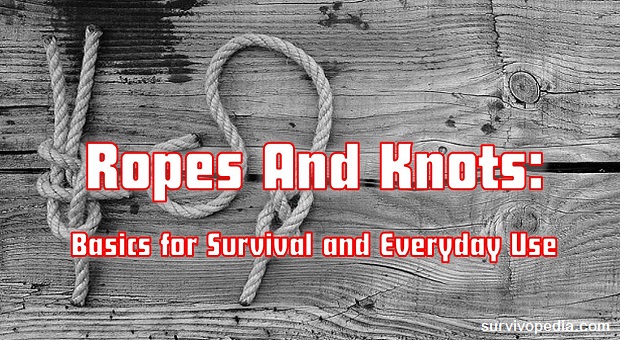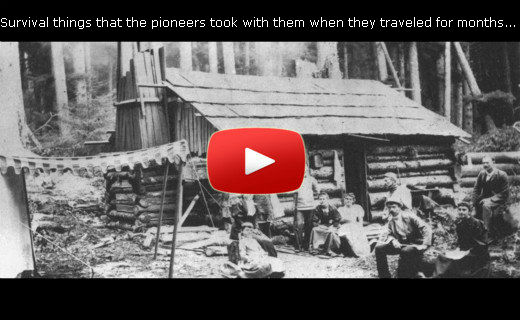There’s good reason our military have trained men to tie them for generations. Knots has always been a skill the inexperienced take for granted, but any experienced outdoorsman, has had enough successes (and failures) to know there’s always a good knot, but only if the rope maintains its quality.
If you use the wrong knot, or type of rope, it could lead to a disaster. For safety sake know what knots, and rope materials to use.
Over the years knot tying has become a diverse practice with many specialty designs used in different jobs and occupations. This article will show you how to choose and care for rope, and prepare it for tying 13 of the most important knots for survival needs.
Subscribe to our newsletter (link available at the end of the article) and you’ll have access to one valuable free report with tutorials about 13 knot tying basics for survival and everyday use.
Related: How Many Knots Do You Know How to Tie?
What Kind of Rope to Use?
Before you can do any knot tying, you must know which rope to use, and how much weight the rope can support vs the expected load weight. Also be aware of the condition of the rope, and which knot to use for the application.
There are four basic types of commonly available rope:
- Laid Rope is made from natural and synthetic fibers. These fibers are often twisted into yarns, then into strands, and finally twisted into rope. This is done in such a way that the twists are equalized so the rope is stable but flexible. Although laid rope patterns are very common and good for making knots, they are not recommended for rapelling, suspending heavy weights, or for long term durability. Each time you use the rope or put weight on it, the fibers will rub into each other and wear excessively internally. This can be very hard to spot and spell disaster if it breaks at the wrong moment. Laid rope is still the easiest for knotting and you can start off with it until you master the basic steps for each knot.
- Sash Cord or Clothesline – Is woven of cotton and glazed with starch or other filler. It is unreliable and clumsy for knot tying and also not good for applications other than hanging clothes.
- Woven Rope – Synthetic fibers are often woven or braided into line or rope in smaller diameters. Some braided ropes may also have non-woven or specialty fiber cores that will not rub and wear as quickly as other configurations. In terms of survival needs, you should choose several different kinds of braided rope and then practice making knots with them so that you are always ready for any situation. You should also know how to prevent unraveling, which is done by fusing with a flame or hot iron instead of whipping.
- Binder twine is too weak to be used in knots where strength is needed and should be avoided.
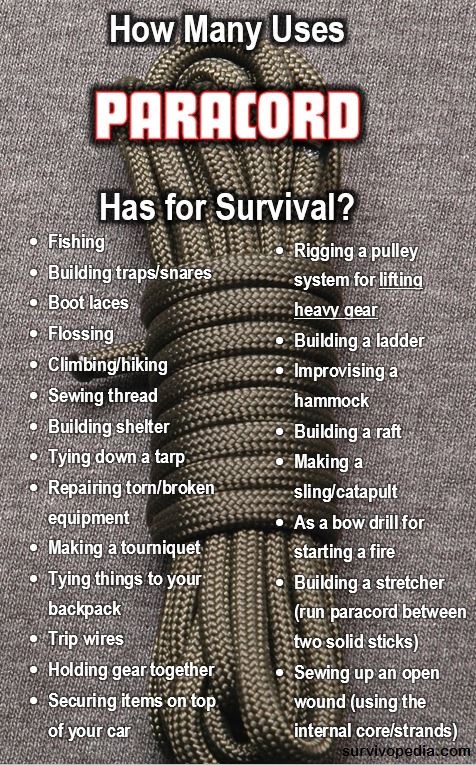
How to Care for Your Rope
How people care for their rope depends on the individual. Some people totally neglect the rope leaving it without whipped ends, unraveling, or trailing in the water if used in boating. Then you have those individuals that are very obsessive. They take rope care way beyond what a normal person would do.
Always give your rope a good inspection at the time you buy it and inspect it regularly as well as before each use.
Basic Rope Care Guide
Do you know what the life expectancy of your rope is? Rope manufactures have recommended retirement schedules that state the life of a rope. How long you will use a rope depends on your own inspection, knowledge of the rope’s history, and assessment of the rope.
In order to prolong its life, always keep your rope off the ground to protect it from dirt containing sharp small chips and crystals. If dirt or sharp bits of debris get into the rope, they can scratch the fibers and weaken them.
Avoid contact with chemicals, acids, bleach, and oxidation agents. Avoid embers, sparks, and matches. And try not to walk on the rope for this may work sharp debris into the rope core.
Even though most modern rope fibers have little nutrition value for rodents, they may still try to get into it or remove bits for nesting. Avoid rodents at all cost.
To preserve a rope when not in use, to keep it supple, and free of kinks, follow the advice below.
- It should be coiled in the direction of it’s lay.
- A right handed rope should always be coiled clockwise.
- A left handed rope should always be coiled counter-clockwise.
- Never store a coiled rope damp or wet. This will mildew the rope very quickly.
- Mildew damage only becomes apparent when the rope breaks suddenly.
Be careful your ropes don’t get kinks in them. If they do, the kinks can overtax the fibers of the rope causing a weak spot in the bend of the kink. Wet rope is more likely to kink.
To avoid kinking in rope, lay the coil on the floor with the inside end down. Reach down through the center of the coil. Pull this end up and unwind the coil counter clockwise. If it uncoils in the wrong direction, turn the coil over and pull the end out on the other side.
When removing kinks from rope, the twist can be removed by dragging the rope forwards and backwards along a smooth section of ground. Pulling the rope forwards and backwards around a tree, a pipe, or other straight object.
How To Coil A Rope
To coil a twisted rope to hang on a peg you must do the following:
- Never pick up the rope and loop it repeatedly over your arm with the loops dangling from you hand because this puts kinks in the rope.
- Before starting a coil, shake out the rope in a straight line along the ground to shake out the kinks in the rope.
- Next, hold one end in your left hand and reaching forward with the right hand to gather enough rope to to make an eighteen inch loop.
- As you place the loop over the palm of your flatly extended left hand, roll the rope between the thumb and forefinger of your right hand, giving it about a half turn towards your body.
- This half turn counteracts the twist put in the rope as it was looped and prevents kinking of the rope.
And this is how to uncoil the rope:
- When playing rope out of a coil, begin with the end in the center of the coil.
- All coils should be unwound from the inside and in a counter clockwise direction.
- If the rope uncoils clockwise, The end should be pushed through the center of the coil and played out from the opposite side.
How to Clean Your Rope
- Ropes should be washed by hand in cold water with a mild soap.
- Rinse free of the soap.
- Wet ropes should always be hung out to dry on a pole, ladder, or a tree limb. Do not put the rope in direct sunlight to dry or near a source of heat. Hair dryers, clothes dryers, and other dryers can also ruin rope.
- Leave the rope hung up and uncoiled until completely dry, then coil the rope.
How to Work the Rope to Prepare for Knotting
If your rope is a cotton braided variety, it will be soft and ready to use when you buy it, and will also become more soft and pliable with use. Manila rope is a good general purpose rope, but it is very tough and stiff when you buy it depending on how tight the lay is.
It will also kink very easily and leave fine slivers of fiber in your fingers. To remove the fibers simply rub the entire rope down with a coarse rag a couple of times. A hard-laid rope is no good to anyone. It must be thoroughly worked until it is reasonably soft and pliable.
How to Tie Knots
All knots and hitches are formed by two or three methods of laying rope: bright, loops, and overhand knots.
Bright is formed by turning the rope so that the end is parallel to the rest of the rope.
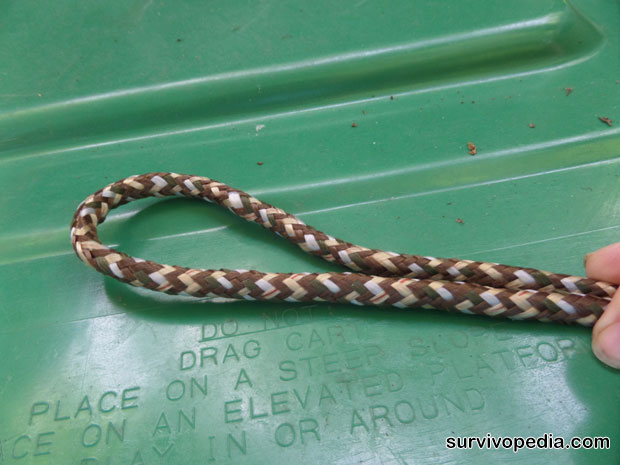
Loop is made by crossing the rope end over or under the rest.
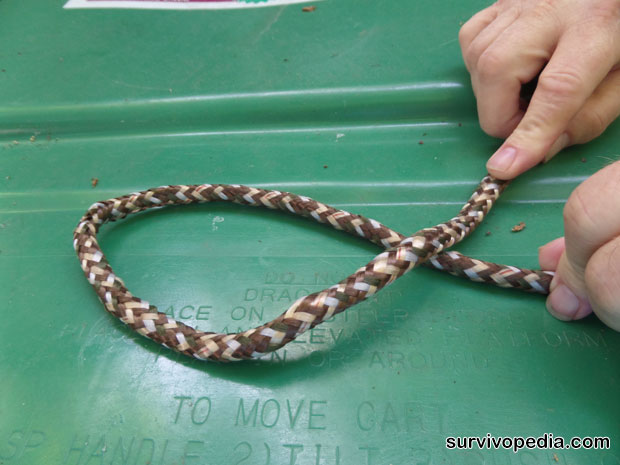
Overhand knot it’s made by passing the end of the rope through the loop.
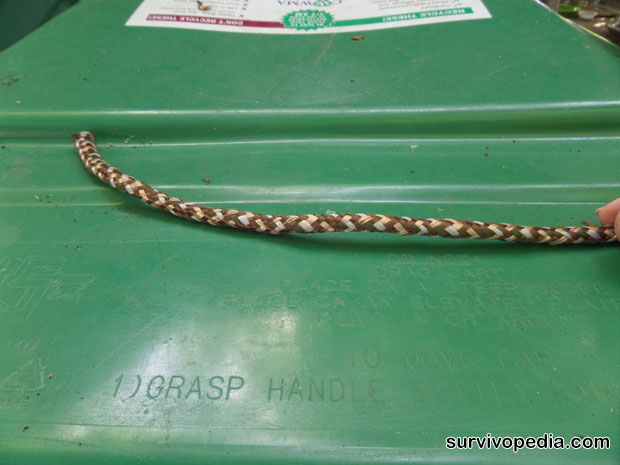
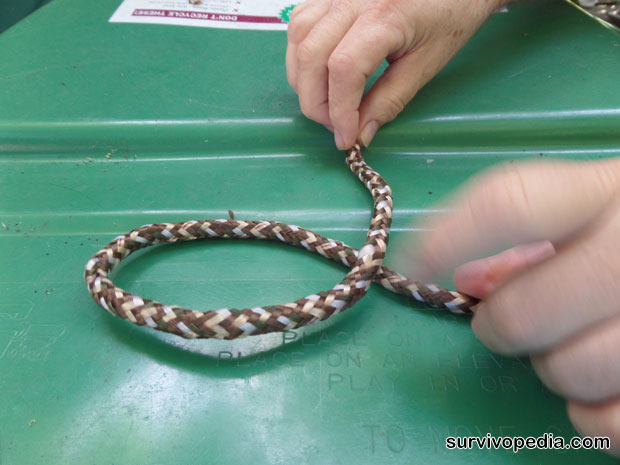
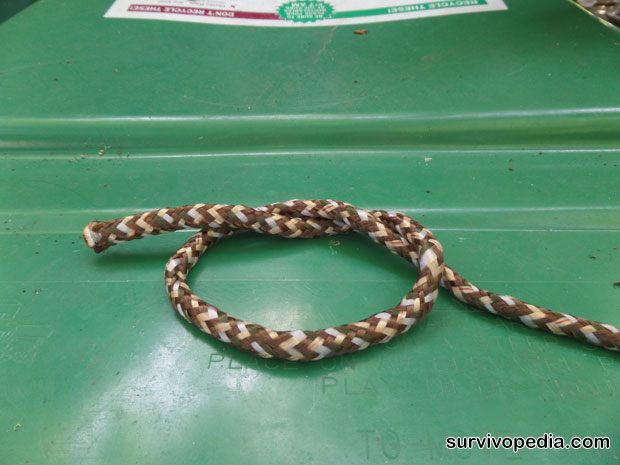
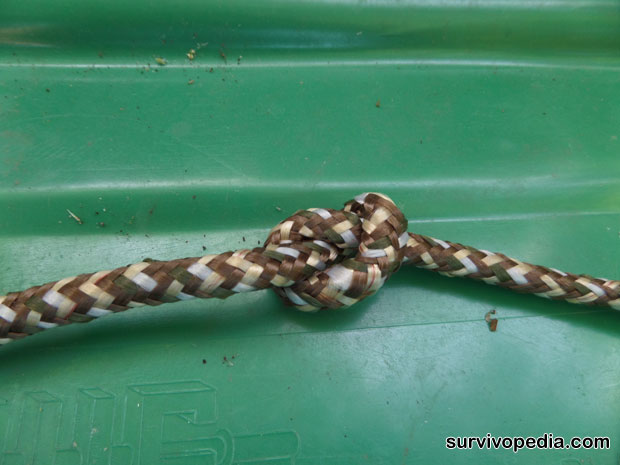
There are 13 types of knots that you should learn for survival and everyday use. CLICK HERE to subscribe for Survivopedia’s newsletter and get the free report on how to tie them!
It does not take much time or effort to learn how to tie knots, however the advantage of doing so can last you a life time.
If you have any questions or comments about knot tying, or just want to share your knowledge please leave them in the comment section below.
by Fred Tyrell

